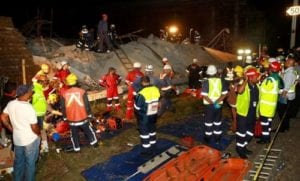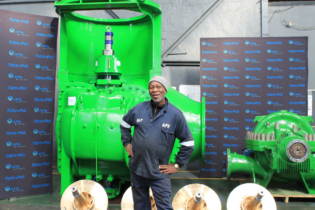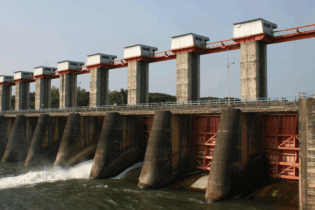By Nicholas McDiarmid, Editor, IMIESA
The collapse of part of a roof at the Tongaat Mall construction site just north of Durban made the headlines last year, not only because of the fatalities and serious injuries, but also for the questionable reputation of the construction company. This article examines legal liabilities in the construction sector, and the regulations that empower municipalities to monitor safety. Not all tragedies can be avoided, but in the case of construction – experience, regulations and legislation should, in theory, minimise its occurrence. In South Africa, all employers are subject to an arsenal of regulations, starting with the Department of Labour’s (DoL) Occupation Health and Safety Act in general and more specifically, the Draft Amendments to the Construction Regulations, 2010 (See table one for specified regulations). In practise, the compliance and monitoring of compliance to these regulations present complex scenarios, and require sufficient competencies and personnel to be effective. In the case of the Tongaat Mall tragedy, a Section 32 hearing has been appointed by the DoL to investigate probable negligence on the part of several stakeholders and the department has taken control of the site to gather evidence. So severe are the possible infractions that the DoL sent a high-powered delegation to the site the day after the incident. The delegation includesthe Deputy Director General of the DoL, Sam Morotoba, the Deputy Director General of Inspection and Enforcement Services, Thobile Lamati and Compensation Fund Commissioner, Shadrack Mkhonto. Rudy Maritz is a leading expert in risk management and organisational development and spoke to IMIESA in his role as Chairman of the National Institute of Organisational Compliance Consultants of Southern Africa (NIOCCSA) about safety and legal liabilities in the construction sector. According to Maritz, health and safety in the sector needs to be better defined. “In terms of liability, when a mall is constructed, things become complex. The land is purchased by a developer who usually sells it on completion or perhaps enters into a joint venture with an investor. In some cases, the owner and the developer can be one and the same, but two separate legal entities. In terms of the Construction Regulations, the company which employs the various agents, such as the town planner, civil engineers and mechanical engineers is deemed to be the client. The agents fall under the Occupational Health and Safety Act Section 37 (2), with the client remaining the ultimately responsible. Given that client and owner are often found to be the same entity, both ‘parties’ are liable.” Before the fall Prior to the incident at the Tongaat Mall, a court had already ordered a work stoppage at the site after allegations that contractor had failed to follow correct procedures for obtaining a permit. “All activity on this site following 7 November was essentially unlawful activity. All the relevant stakeholders must have known this; the mall owner, the developer, and all the appointed agents – including the contractor.” It is important to note that the reason the court ordered stoppage was due, in essence, to an administrative error: the failure to follow procedure in obtaining a license. “In all likelihood, the incident may well have still occurred had the work stoppage been observed. It would simply have been delayed,” says Maritz. He goes on to note that since all the stakeholders benefitted financially whilst carrying out unlawful activity, they all face civil claims and possible prosecution in terms of Chapter 5 of the Prevention of Organised Crime Act. The act and procedures According to the Occupational, Health and Safety Act, certain categories of employers must prepare a written policy concerning “the protection of the health and safety of their employees at work, including a description of their organisation and the arrangements for carrying out and reviewing that policy.” In the case of mall owners, Maritz recommends the following steps:- set quality standards for the people you engage
- set quality standards for materials to be used
- set design standards based on tenant profiles and occupant needs
- develop method statements based on the design of the mall
- define who does what, when and how, in the method statement
- identify inter-dependencies during project and communicate delaysregularly
- develop a system of performance guarantees and verification tests
- civil hold points are critical stops in the process where the verification checks should be performed to ensure adherence to standards. It should be performed in the presence of the Resident Engineer who should sign off on the hold-point, verifying satisfactory completion.
- geo-technical reports for proper design of foundations and bearing points on structural frames
- concrete specifications, regular slum testing, cube testing, checking on ordered versus delivered specifications
- formwork design and slab curing schedules should be strictly enforced prior to removal of formwork.








